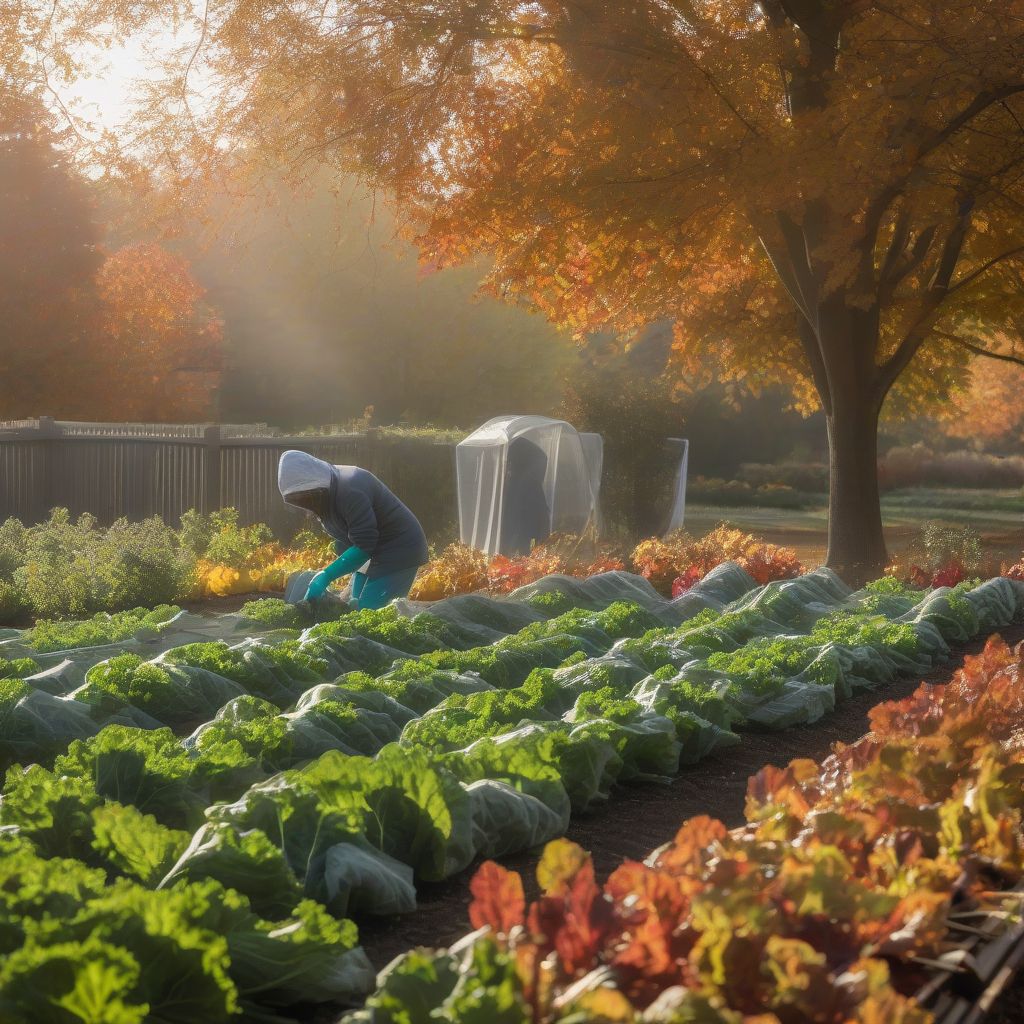Ever dreamt of biting into a crisp, homegrown carrot harvested just as the first frost kisses the ground? Or perhaps savoring a hearty kale soup made with greens you nurtured through the autumn chill? Growing fall crops in cooler climates might seem challenging, but with a little planning and the right know-how, you can enjoy a bountiful harvest even as the days grow shorter. This guide will provide you with everything you need to know to successfully grow your own delicious fall vegetables.
Understanding Your Cooler Climate
Before we dive into specific crops, it’s essential to understand your specific climate. “Cooler climates” encompasses a broad range of conditions. Knowing your first and last frost dates is crucial. You can find this information by contacting your local agricultural extension office or searching online resources specific to your region. This information will help determine which crops are suitable and when to plant them.
Determining Your First and Last Frost Dates
Knowing your first and last frost dates is like having a roadmap for your fall garden. These dates dictate the length of your growing season and guide your planting schedule. Your last spring frost date signifies the safe time to plant warm-season crops outdoors, while your first fall frost date signals the time to protect or harvest tender plants.
Microclimates and Their Impact
Even within a small area, temperatures can vary significantly. A south-facing wall, for example, can create a warmer microclimate, extending your growing season. Consider these microclimates when planning your garden layout. “As a nutritionist, I often recommend incorporating fresh, homegrown produce into your diet. Fall crops, in particular, offer a unique nutritional profile,” says registered dietitian, Sarah Miller.
Choosing the Right Fall Crops
Not all vegetables thrive in cooler temperatures. Luckily, many delicious and nutritious options are perfectly suited for fall gardening.
Cold-Hardy Vegetables
These vegetables can tolerate light frosts and even thrive in cooler temperatures. Some popular choices include:
- Kale: This leafy green is a nutritional powerhouse and becomes even sweeter after a light frost.
- Spinach: Another excellent source of vitamins and minerals, spinach can be sown in late summer for a fall harvest.
- Carrots: These root vegetables develop their best flavor in cool soil.
- Broccoli and Cauliflower: These cruciferous vegetables enjoy cooler temperatures and can be started indoors or directly sown in the garden.
- Brussels Sprouts: These mini cabbages are surprisingly cold-hardy and offer a unique flavor.
Extending the Season with Row Covers
Even tender vegetables can be grown in cooler climates with the help of row covers. These lightweight fabrics protect plants from frost and extend the growing season by several weeks. “Using row covers is like giving your plants a cozy blanket,” explains Master Gardener, John Smith, author of “The Joy of Gardening.”
 Growing Fall Vegetables in Cool Climates
Growing Fall Vegetables in Cool Climates
Planting and Care
Once you’ve chosen your crops, it’s time to get planting!
Starting Seeds Indoors vs. Direct Sowing
Some crops, like broccoli and cauliflower, benefit from being started indoors 6-8 weeks before the last frost. Others, like carrots and spinach, can be directly sown in the garden. “Starting seeds indoors gives you a head start, but direct sowing can be easier for some crops,” advises Sarah Miller.
Soil Preparation and Amendments
Healthy soil is the foundation of a successful garden. Amend your soil with compost or other organic matter to improve drainage and fertility.
Watering and Fertilizing
Water deeply and consistently, especially during dry spells. Use a balanced fertilizer to ensure your plants have the nutrients they need.
Pest and Disease Management
Cooler temperatures don’t eliminate the risk of pests and diseases.
Common Fall Garden Pests
Keep an eye out for aphids, slugs, and cabbage worms. Use organic pest control methods whenever possible.
Preventing Diseases
Proper spacing and air circulation can help prevent fungal diseases. Rotate crops each year to minimize the buildup of soilborne pathogens.
Harvesting and Storing Your Fall Bounty
The culmination of your hard work is the harvest!
Harvesting at the Right Time
Harvest vegetables at their peak ripeness for the best flavor and nutritional value.
Storage Techniques for Extending Enjoyment
Proper storage techniques will help you enjoy your harvest for weeks or even months. Root vegetables can be stored in a cool, dark place, while leafy greens can be blanched and frozen.
Conclusion
Growing fall crops in cooler climates is a rewarding experience. By understanding your climate, choosing the right crops, and following proper gardening practices, you can enjoy a bountiful harvest of fresh, flavorful vegetables. Remember the key takeaways: know your frost dates, choose cold-hardy varieties or use row covers, prepare your soil well, and be vigilant about pests and diseases. So, grab your gardening gloves and get ready to savor the flavors of fall! What are your favorite fall crops to grow? Share your tips and experiences in the comments below! For more tips on organic gardening, check out this article on top vegetables to grow each season: Top Vegetables to Grow Each Season Organically



